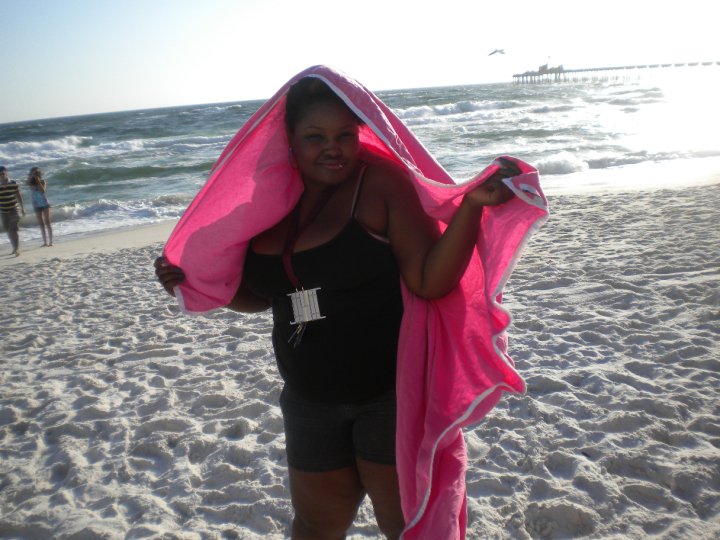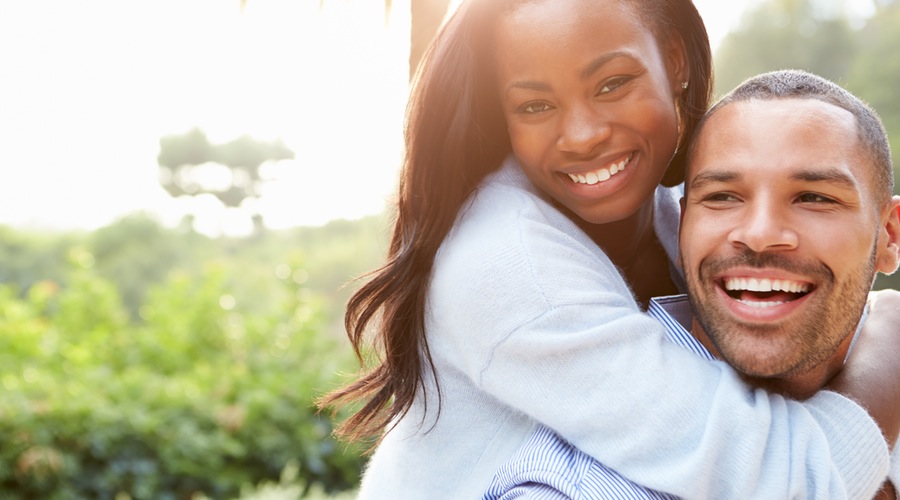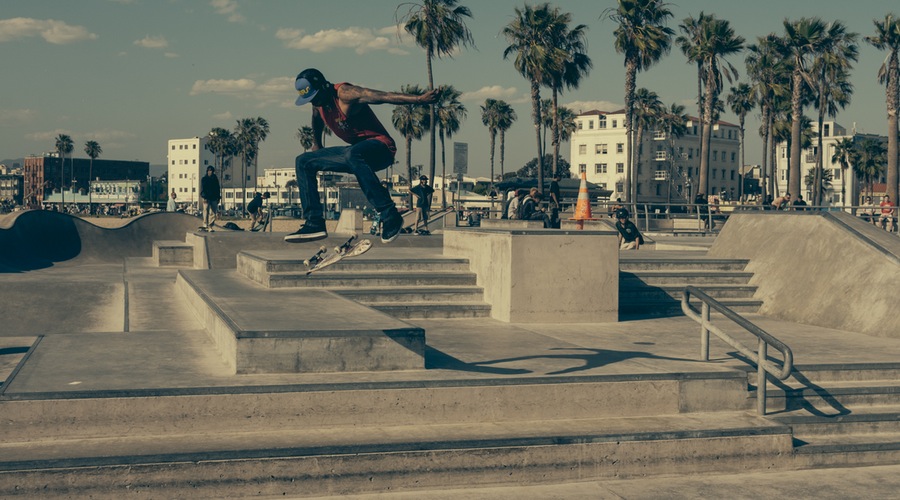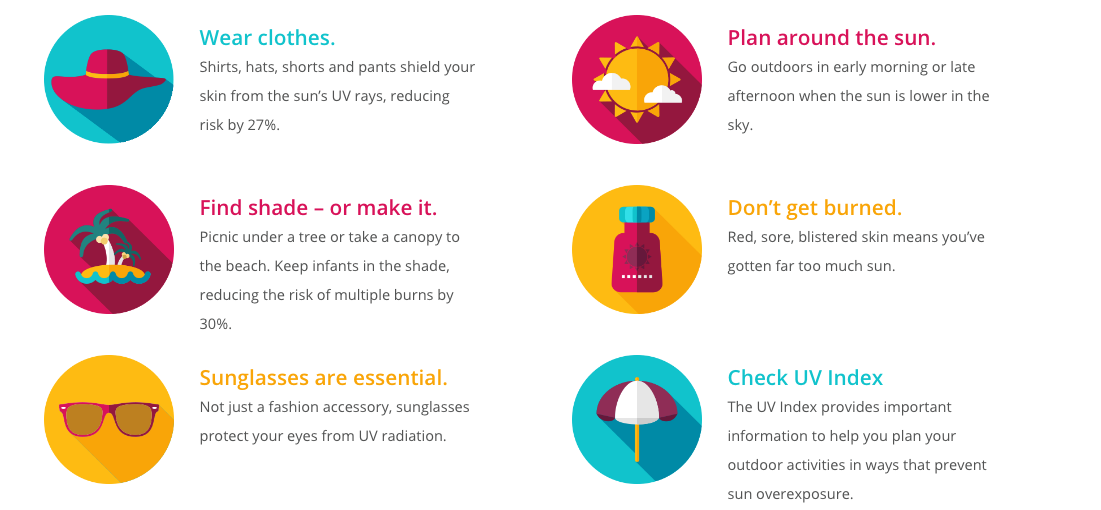
Sun Protection, Sunscreen, and My Black Skin: How (and Why) I’m Changing My Attitude

As a kid, I’d spend hot summer afternoons reclining in the sun’s piercing heat, napping. My parents knew almost nothing about the dangers of UV rays. My only understanding of the negative effects of the sun came from being aware that we had torn a hole in the ozone layer with our cars and aerosol sprays. Yet, I felt that it really had nothing to do with me. As a black child in the 1990s, I never saw my mother using hairspray. I didn’t drive a car, and we recycled. My relaxer required none of the teasing fuss of helmet hair, and all my styling was done with “grease”— fragrant petroleum jelly. I enjoyed the sun as it lighted up a good book during a slow afternoon.
Growing up, our aversion to sunscreen was a result of a myth: that black people don’t need sun protection. Why would we when our skins were made black by the sun itself? None of the sunscreen companies advertised to us, and unless the planet magically moved a few inches closer to the sun, there was no way on this beautiful green earth would I would feel the experience of getting burned. Not as much as my lobstered friends have in the directly brutal take-down of a Florida summer.

The first time I used sunscreen was when I interned at BUST magazine. At BUST, the interns generally review a beauty product as part of our magazine training, so I ended with an Alba sunscreen. The name of the brand didn’t inspire me with any confidence that the product would be a great fit for my skin, but I was down to try anything. The idea was super awkward for me. I didn’t want to tell those wonderful women editors that I honestly didn’t need it like they did. The sunscreen didn’t prove me wrong. It ashened-up my skin and made me look like a fresh corpse. For the most part, it left me embarrassed and slightly uncomfortable as I found the smell ridiculously irritating. From that day on, I was off the white stuff! It really wasn’t worth the hype.
The truth is that there’s nothing about the larger cultural conversation about sun protection or skin cancer that includes black and brown people. The people represented on sunscreen bottles are hardly ever black. And when I go to ethnic beauty supply shops, though there are aisles of skin bleaching soaps, lotions, and other poisons, I hardly ever come across a tube of sunscreen. So, my mother never slathered my back up with the weight of that sour white cream whose smell is so familiar for my fairer friends. Nobody ever told her (or me) that we should concern ourselves with UV rays. These are the cultural stories told to those of us who have dark skin. But the reality tells another story.

Basal cell carcinoma, skin cancer, is the second most common skin malignancy on Native and African American skin. Scientists estimate that though melanin—the molecule that gives skin it’s brown-to-black hue—gives the same protection as an SPF 13 sunscreen that’s not enough to stop a some of us from developing some skin cancers. In short: It’s for important brown and black people to make concerted efforts to protect themselves from UV rays.
But how? The cultural reality of language is that because black and brown folk need LESS sun protection, this is often misconstrued that we don’t need ANY. According to a recent study, 63% of African Americans have never-ever worn sunscreen.
So, sunscreen companies don’t make products that are readily available and good for our deeply colored skin types and neither do they market them to us in a way that would get our attention. Not to mention that on the medical end of the issue, doctors hardly realize that their brown and black patients may have skin carcinomas until they’ve turned cancerous since they just don’t look for them (though awareness is a bit better than it used to be).

This isn’t to say that I have gotten perfect at the whole sunscreen thing: I still forget some days, and others I find the smell quite unbearable. But it’s still important that we use healthy and safe ways to protect our skin from UV rays that may adversely affect our health—and sunscreen isn’t the only way to do that. Covering up during peak hours in the sun by staying in the shade, wearing longer sleeves and a hat is key. And don’t forget your sunglasses—everyone’s eyes need sun protection.
Before you buy sunscreen, check out the Environmental Working Group’s advice (that goes for everyone):
+Don’t buy sunscreen with Vitamin A (aka retinyl palmitate) as it can actually spur cancer growth
+Don’t buy high-SPF sunscreens (they may do more harm than good); something in the 20-30 range is fine; Australians, who know about sun protection, cap their SPF values at 30
+Do look for brands that are free of toxic chemicals like Mineral Fusion, Badger, Kiss My Face, and Bullfrog (more good choices here).

It’s also important to bring any weird moles or spots to your dermatologist to check out. Dr. Maritza Perez of Columbia Medical School in NYC suggests:
I advise people of all ethnicities to do a monthly skin self-exam, looking for lesions that bleed, ooze or crust, don’t heal, or last longer than a month; these may indicate basal cell carcinoma. Squamous cell carcinomas may appear as non-healing ulcers, growths, and sores next to scars or areas of previous physical trauma/inflammation, particularly if they appear on the legs. New or existing moles (brown, pink, black, red, or flesh-colored spots) that are asymmetric, have an irregular border, change in color, are larger than a pencil eraser, or change in any way may indicate melanoma. Any of these warning signs should be examined by a dermatologist, including growths on the hands, soles, or under the nails.
I’ve been trying to be more conscious about sun protection of all kinds as I age: But still, my friends and I are constantly buying sunscreens that we end up not using. Not because we don’t know any better, but because the facts haven’t struck quite so deeply for us. For instance, I understand that the sun damage will cause the first signs of aging, but when I imagine walking around smelling like rotten coconuts and covered in a milky white film, I am willing to take my chances with the UV rays.
To make matters worse, I have found that some cosmetic grade sunscreens only work for a few hours, and may actually break me out. Frustrating! I doubt that it will be easy for even me, who knows better, to erase the “I’m black. I don’t really NEED sunscreen,” voice in my head. But if I plan on celebrating a summer of healthy and beautiful skin care choices, I better get to reeducating myself! Or at least staying out of direct sun and upping my hat-wearing game. (I’m also going to try ExtraShade, a sunscreen that promises not to be ashy as it’s Paba-free and fragrance-free; I’ll let you know how that goes!)




